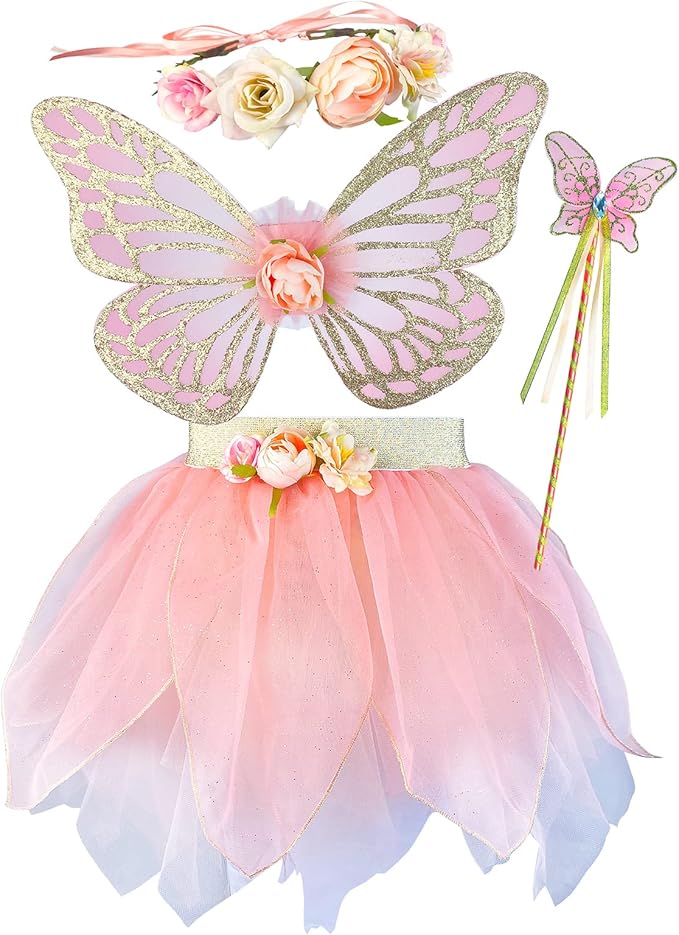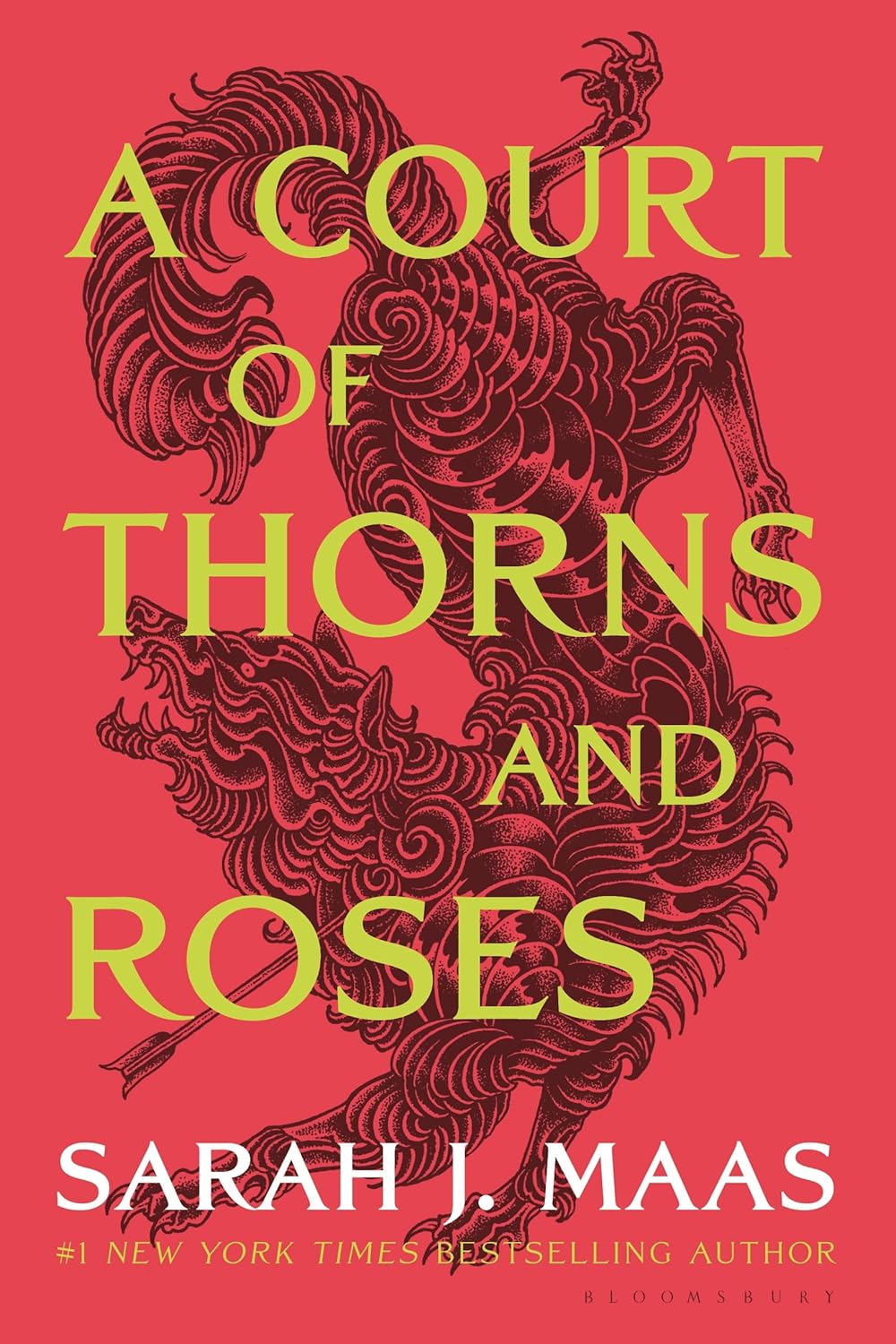- Home
- Fairy Blog
- Fairy Cakes
- Fairy Quotes
- Safety Dance
- The Flower Fairies Books
- What is a Fairy?
- Are Fairies Real?
- Elemental Fairies
- Faeries
- What are the Fae?
- Fae Fantasy Books
- Fairy History
- Origin of Fairies
- Fairies in Folklore
- Pixies
- Pixie Fairy Differences
- Gothic Fairies
- Tooth Fairy
- Fairy Festivals
- Fairy Gardens
- Fairy Garden Accessories
- Fairy Forests
- Fairy Poems
- Fairy Tales
- Fairy Tale Origins
- Classic Fairy Tales
- 24 Fairy Tales
- Fairy Tales around the World
- About Fantasy Creatures
- Dragons
- Dwarves
- Elves
- Gnomes
- Leprechauns
- Mermaids
- Unicorns
- Fairy Face Painting
- Fairy Costumes for Kids
- Free Fairy Art
- Fairy Coloring Pages
- Fairy Crafts For Kids
- Chinese Dragon Art
- How to Draw a Dragon
- Chinese Dragon Drawing
- Dragon Coloring Pages
- Fairy Tattoo Ideas
- About Us
- Contact Us
- Disclaimer
- Privacy Policy
Hans Christian Andersen
The Little Mermaid
Hans Christian Andersen's "The Little Mermaid" is a classic fairy tale penned by the legendary Danish author Hans Christian Andersen. This timeless story revolves around a young mermaid princess who is enamored with a human prince. So smitten is she, that she willingly risks her underwater life, voice, and even her identity to be with him on land.
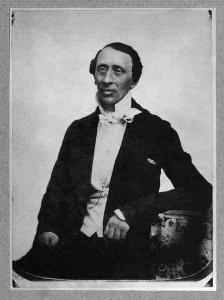
Hans Christian Andersen - The Little Mermaid
An Overview of The Tale
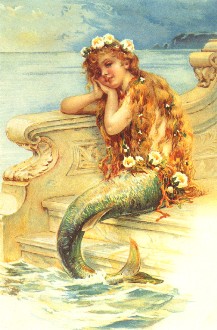
The Alluring Underwater Realm:
The setting of this story is beyond magical—it's a fantastical underwater kingdom, unlike anything you've ever imagined. Picture a seabed made of bright blue sand, trees with golden, glittering fruits, and flowers that sway as if dancing to an ethereal tune. The fish dart around like birds do in our sky, making the whole scenario animated and alive.
The Palace: A Royal Household:
Deep underwater, in the heart of this realm, stands a magnificent palace made of coral. The windows are crafted from the clearest amber, and the roof consists of mussel shells that house pearls as radiant as the moon. The sea king, who's been a widower for many years, rules this realm. His wise mother, the queen dowager, helps run the household. She's a stickler for royal traditions and flaunts extra oysters on her tail to underline her noble lineage.
The Mermaid Sisters:
Among the king's daughters, the youngest mermaid is the focal point of our story. She is exceptionally beautiful and equally curious, always eager to learn more about the world above the ocean. She pesters her grandmother with endless questions about humans, animals, and life on land.
A Study in Beauty and Curiosity:
Each mermaid sister has her personal garden to cultivate and decorate. While her sisters opt for odd artifacts from sunken ships, our Little Mermaid chooses only red flowers that mirror the sun's fiery hue and a delicate marble statue of a young boy, signifying her unique taste and her dreams of love and a different life.
Plot Highlights: A Journey of Sacrifice and Discovery:
In her quest for love, the Little Mermaid strikes a perilous deal with a Sea Witch. She exchanges her voice for a pair of human legs. The catch? She must make the prince fall in love with her, or else she'll be turned into sea foam! Though she dances her way into the prince's life, she can't secure his love. Her final act is a testament to her courage and unconditional love.
For the rest of the story link here
Hans Christian Andersen - the Author
Hans Christian Andersen - The Little Mermaid
The Genius Behind The Tale
Hans Christian Andersen, the brilliant mind behind this story, wasn't just any writer. Born in Denmark in 1805, Andersen was also a prolific poet. He has authored numerous stories that have stood the test of time, such as "The Ugly Duckling" and "The Emperor's New Clothes." He drew his inspiration from folklore, mythology, and his vivid imagination. Andersen's works have been translated into over 125 languages, a testament to his universal appeal.
Click here to read more about Hans Christian Andersen Fairy Tales
Why This Story Resonates with Readers of All Ages
The story transcends its fairy-tale framework to explore complex themes like sacrifice, identity, and the moral dimensions of love. That's why it's not just for kids; adults often find layers of meaning in the tale too.
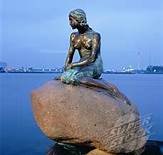
A Cultural Landmark: A Statue in Honor
Did you know this fairy tale is so famous that there's a statue of the Little Mermaid in Copenhagen, Denmark's capital? Though it's not a huge statue—only about 4 feet tall—it holds a special place in the hearts of the Danes and tourists alike.
It was commissioned back in 1913, and it has been fascinating visitors for more than a century.
The famous statue is situated in Langelinie, Copenhagen. It's worth noting that it has endured acts of vandalism over the years, including being decapitated twice! Despite this, the statue remains a symbol of Danish heritage and fairy-tale romance. The sculpture's creation involved some real-life drama too. Ellen Price, the prima ballerina who served as the inspiration for the head of the statue, refused to pose nude. Sculptor Edvard Eriksen then used his wife, Eline Eriksen, as a model for the body.
Ballet and Theater Adaptations:
Hans Christian Andersen Little Mermaid" has been retold across various art forms, most notably in ballet and theater. Carl Jacobsen, who commissioned the iconic statue, was inspired by a ballet performance based on the story at Copenhagen's Royal Theatre. This speaks volumes about the tale's versatility and emotional resonance.
Apart from the statue and ballet, the story has inspired countless paintings, musical compositions, and even a Disney movie that took great liberties with the original plot. While Andersen's version explores deep ideas and comes to a tragic end, the Disney movie gives us a happier conclusion, focusing more on the power of love and friendship.
"Hans Christian Andersen Little Mermaid" is rich in symbols that demonstrate life's make up. The underwater realm represents the mysterious and the unknown, while the world above the sea stands for curiosity and ambition. The mermaid's transformation can be seen as a rite of passage. Every young teen goes through many life changes. Her love and tragic ending offer a sad lesson about the cost of giving up one's identity for love.
Today readers think of "The Little Mermaid" and how it demonstrates feminism and psychology. They question the ethics and implications of the society that compels her to make such sacrifices for love. Despite the sad feelings generated, the story remains popular for its power and storytelling ability even in spite of its complexity.
Its timeless themes of love, sacrifice, and identity make "Hans Christian Andersen Little Mermaid" a tale that crosses cultural boundaries. It’s not just a story for the Danish people but a global treasure that has been adapted and cherished worldwide.
From its historical roots to its global impact, "The Little Mermaid" isn’t just a story but a rich tale with cultural, historical, and moral features. Whether you're a child hearing it for the first time or an adult rereading it, the story offers something for everyone, making it a classic in the truest sense.
The Conclusion: More than Just a Fairy Tale
"The Little Mermaid" is not just about underwater adventures and magical spells. It's an exploration of what it means to love, to be brave, and to make difficult choices. This story, much like the statue in Copenhagen, may be small in form but is monumental in impact and universal appeal.
Adorable Fairy Costume Set!
Includes a fairy tutu, wing, wand and flower halo - perfect for parties, dress-up play, pageants and so on.
CLICK HERE for the best price!
Click here to read more about Classic Fairy Tales
Read more about Fairy Tales here.
Visit this page to see our list of many different Fairy Tales.
Book of the Month
The Best Selling Fae Fantasy Book! A great gift!
CLICK HERE for more information and best price!
Recent Articles
-
Fairy Costumes for Kids
Dec 30, 25 11:27 AM
Find the perfect fairy costume for you little ones! We have researched the best fairy costume options available on Amazon covering all budgets.. -
Christmas Angel Story of boy meets Angel "The Magic Letter" Dean Kiser
Dec 30, 25 09:00 AM
A Christmas Angel Story about an eleven year old orphan boy that meets an Angel. "The Magic Letter" by Dean Kiser -
Fae Fantasy Books - where love can be both thrilling and terrifying!
Nov 22, 25 02:34 AM
Fae Fantasy Books - explore new aspects of what it means to be human in a world where magic and immortal beings exist! A perfect blend of danger and allure!
